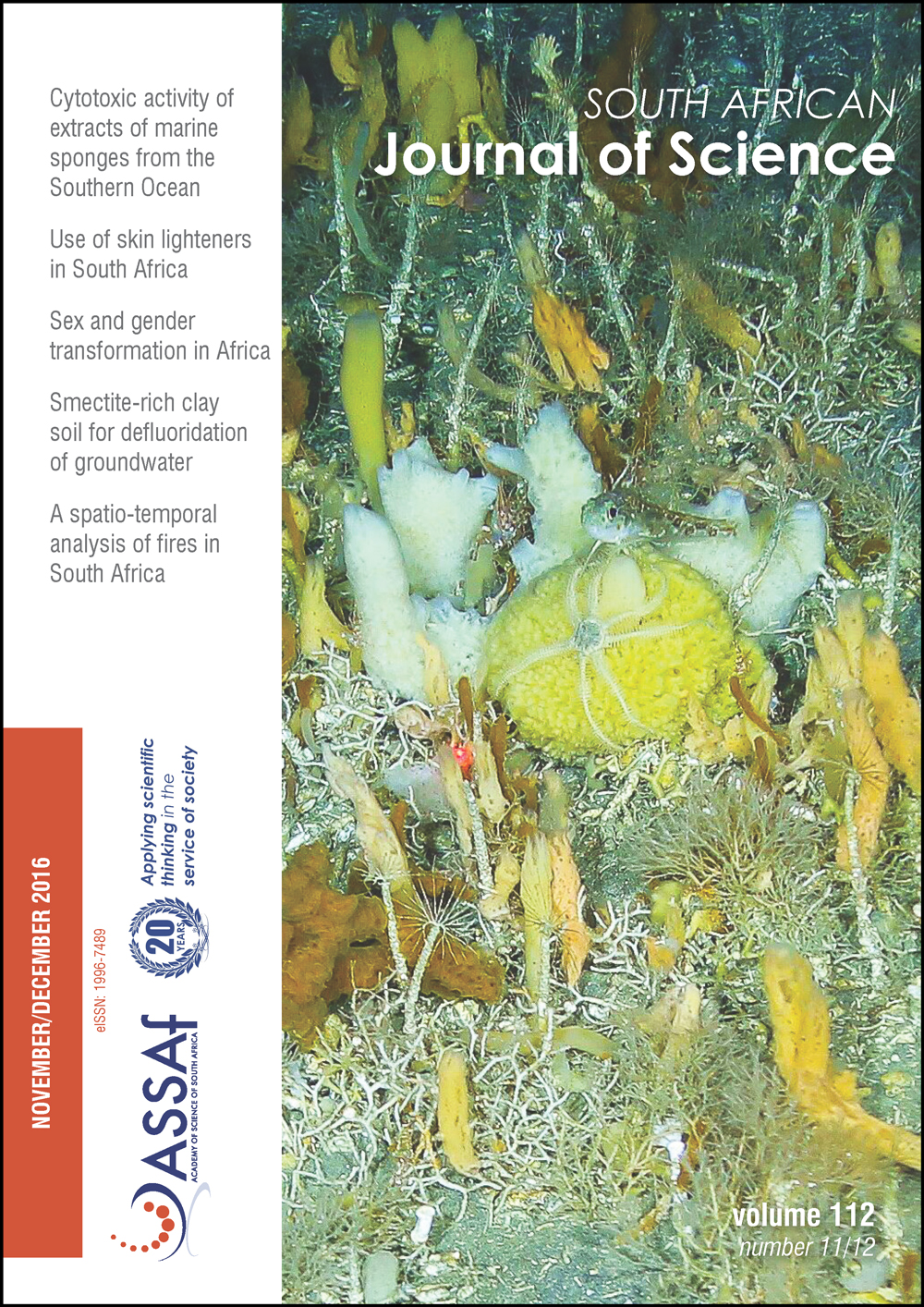Palaeomagnetic results and new dates of sedimentary deposits from Klasies River Cave 1, South Africa
DOI:
https://doi.org/10.17159/sajs.2016/20160051Keywords:
Klasies River main site, palaeomagnetism, palaeosecular variation, Late Pleistocene, HoloceneAbstract
Palaeomagnetic data from Klasies River main site Cave 1 (Eastern Cape Province, South Africa) are reported. Natural remanent magnetisation directions obtained from 77 oriented samples were determined by progressive alternating field demagnetisation methodology. Three palaeomagnetic samplings from the Witness Baulk from the Middle Stone Age (MSA) Late Pleistocene White Sand member and the Holocene Later Stone Age (LSA) middens in Cave 1 were dated and analysed to obtain the palaeomagnetic directions recorded in the sediments. Here we provide new optically stimulated luminescence (OSL) dates for the White Sand Member, and new accelerator mass spectrometry (AMS) radiocarbon dates for the LSA midden of areas not previously dated. The palaeomagnetic analysis took into account rock magnetism and directional analysis. The former reveals that the main magnetic carrier was magnetite; the latter shows that characteristic remanent magnetisation of normal and anomalous directions was observed in the lower portion of the White Sand Member and LSA midden. Normal directions correspond to the palaeosecular variation record for South Africa during the Late Pleistocene. On the other hand, the anomalous directions recorded in the LSA midden might represent the likely Sterno-Etrussia geomagnetic field excursion which occurred during the Late Holocene and is observed in other places on the planet. Finally, the directional data obtained are a potential tool for discussing the age of deposits corresponding to those periods.
Significance:- New dates confirm and extend previous age determinations for the LSA and White Sand Member from Klasies River
Downloads
Published
Issue
Section
License

All articles are published under a Creative Commons Attribution 4.0 International Licence
Copyright is retained by the authors. Readers are welcome to reproduce, share and adapt the content without permission provided the source is attributed.
Disclaimer: The publisher and editors accept no responsibility for statements made by the authors
How to Cite
- Abstract 790
- PDF 600
- EPUB 177
- XML 257
- Supplementary Material 168












.png)